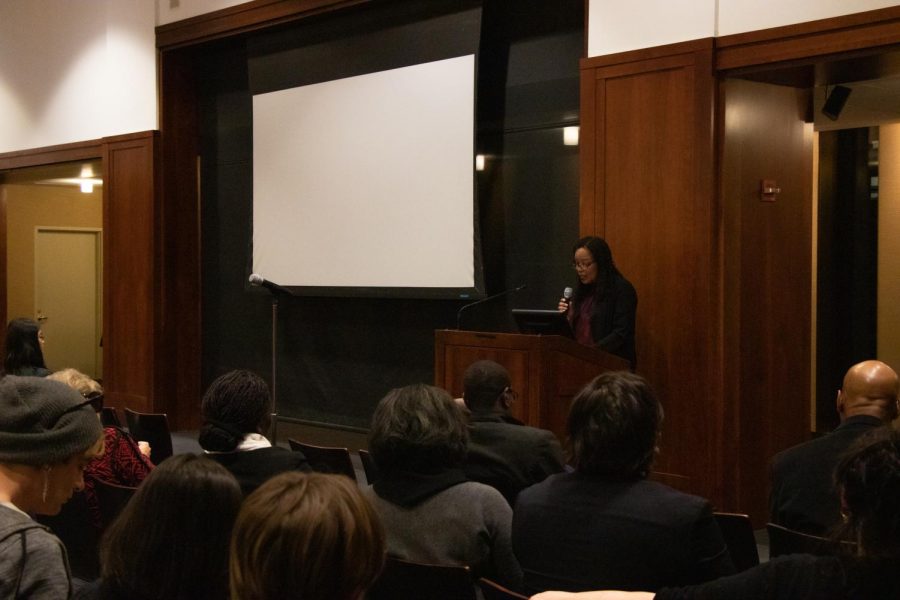Race Reconstructs Itself in a Post-Apocalyptic World
A scholar of African American literature reads portions of her book to portray ideas about race theory.
March 4, 2020
Saidiya Hartman, a scholar of African American literature, spoke about the impact of white supremacy on American history at an annual Black History Month lecture. Fordham University’s department of African and African American studies hosted the lecture on Feb. 21 as a part of Black History Month programming on campus.
“The degrading of men by men and the use of men for the benefits of mankind is as old as mankind, what is new is its scale and absoluteness,” Hartman said.
Hartman is a professor of English and comparative literature at Columbia University. In 2019, she received the MacArthur Fellowship for her literary work as a literary scholar and cultural historian. Her previous books include “Scenes of Subjection: Terror, Slavery, and Self-Making in Nineteenth Century America,” “Lose Your Mother: A Journey Along the Atlantic Slave Route,” and “Wayward Lives, Beautiful Experiments.”
Students in Understanding Historical Change Class: American Pluralism, taught by Ryan Purcell, read “The Burdened Individuality of Freedom” and many of them attended the event.
“The text was about the impacts of slavery,” said Michelle Moughan, Fordham College at Lincoln Center ’23. “I feel like (the lecture) is going to be very eye-opening.”
Hartman talked about a race philosophy in which those with black, brown and yellow skin tones are oppressed and taken advantage of. She believes that the white race relies on a future based on taking advantage of the hard work of people of color.
Hartman used a hypothetical story set in post-apocalyptic New York City to explain her philosophy about race as a social construct.
In the story, an African American man named Jim saves a white woman named Julia. When Julia realizes that Jim is African American, she tries to run away from him before remembering the destruction around her. Julia changes to view Jim not as African American but as the man who saved her. In return, Jim has a newfound freedom in not being viewed by his race. In this post-apocalyptic world, Julia and Jim realize that race has no real meaning.
Hartman uses the post-apocalyptic world to demonstrate how society constructs and reconstructs race. In this world, there are no police officers to regulate Jim just because he is black.
“For the first time, he moves freely about the city,” Hartman said about the character Jim. “There are no white citizens or police to regulate or arrest his movement.”
“No matter how bad things get, white folks will always enjoy a monopoly on life, own the earth forever and ever and continue to make the future in the image of the past, even as it is killing us and delivering us onto the brink of extinction,” Hartman said at the end of her lecture.












